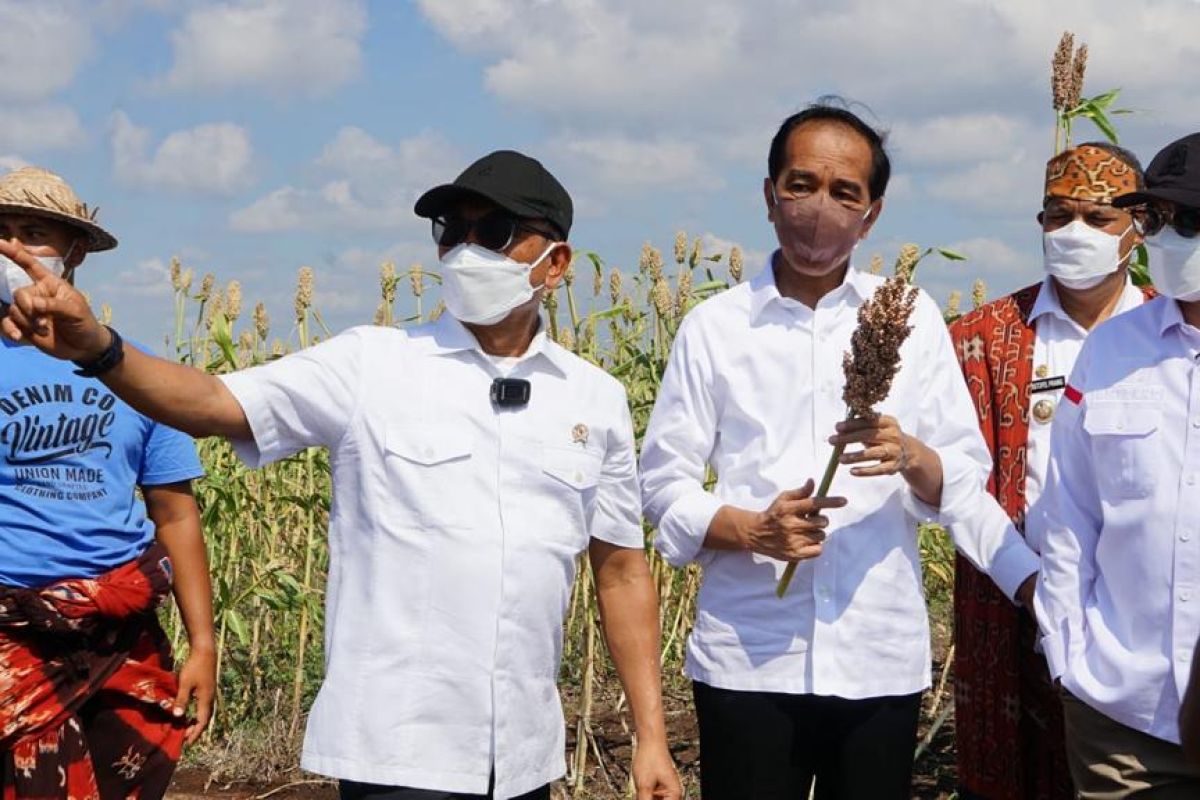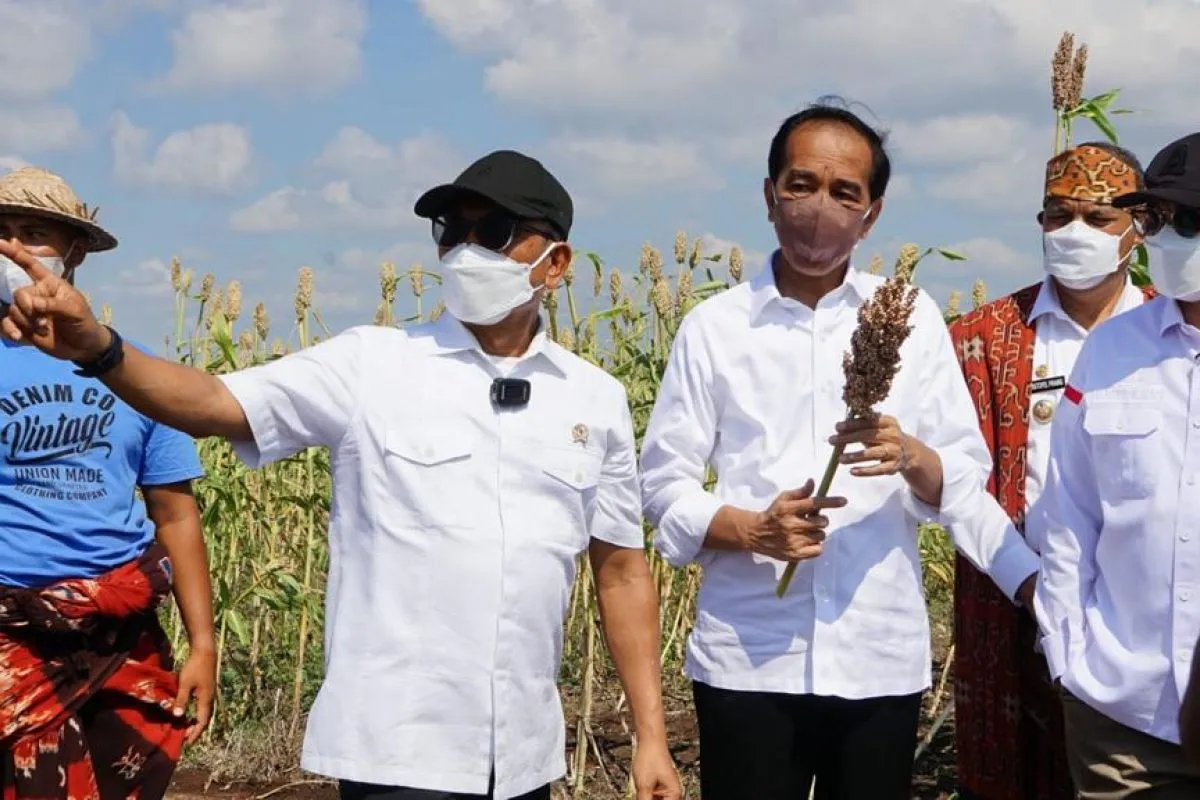Jakarta (ANTARA) - Sorghum is a safe alternative for people with conditions such as gluten allergy and diabetes and has a fairly high protein content, Presidential Chief of Staff, Moeldoko, has informed.
"Unlike most grains, sorghum does not contain gluten. Those who are allergic to gluten, it is safe to eat this food," he said, according to a statement received in Jakarta on Friday.
Moeldoko made the remarks after joining President Joko Widodo (Jokowi) and farmers in East Sumba, East Nusa Tenggara (NTT), in harvesting sorghum on Thursday.
According to him, sorghum also has low sugar content so it is safe for diabetics.
"It is high fiber that makes sorghum good for those who are on a diet because it keeps you full longer, so you do not get hungry easily," he pointed out.
Sorghum has a fairly high protein content so it can meet the daily protein needs of the community.
A grain crop, sorghum has strong resistance: It can survive in critical and marginal lands with little water. Thus, abandoned land can be turned into productive land for growing sorghum.
After planting seeds and harvesting sorghum in East Sumba district on Thursday, President Widodo said he plans to expand the area under sorghum plantation in East Nusa Tenggara (ENT) province in order to curtail the imports of wheat and corn as food sources.
"I have given directives to the governors and heads of districts to really determine how much land can be used to plant sorghum so that we do not depend on imported wheat and corn,” the President added.
Baca juga: Presiden ingin perluas tanam sorgum di NTT
The head of state explained that corn had been planted in the area in Sumba district, but it was not found very productive due to which the land was utilized for growing sorghum instead.
Currently, East Sumba district has 60 hectares of sorghum cultivation area, with productivity pegged at 5 tons per hectare.
Baca juga: Moeldoko sebut Sumba berpotensi besar jadi Pulau Sorgum
Although it is still considered a pilot project, sorghum farmers can generate an income of around Rp50 million per hectare in a year, or more than Rp4 million per month.


